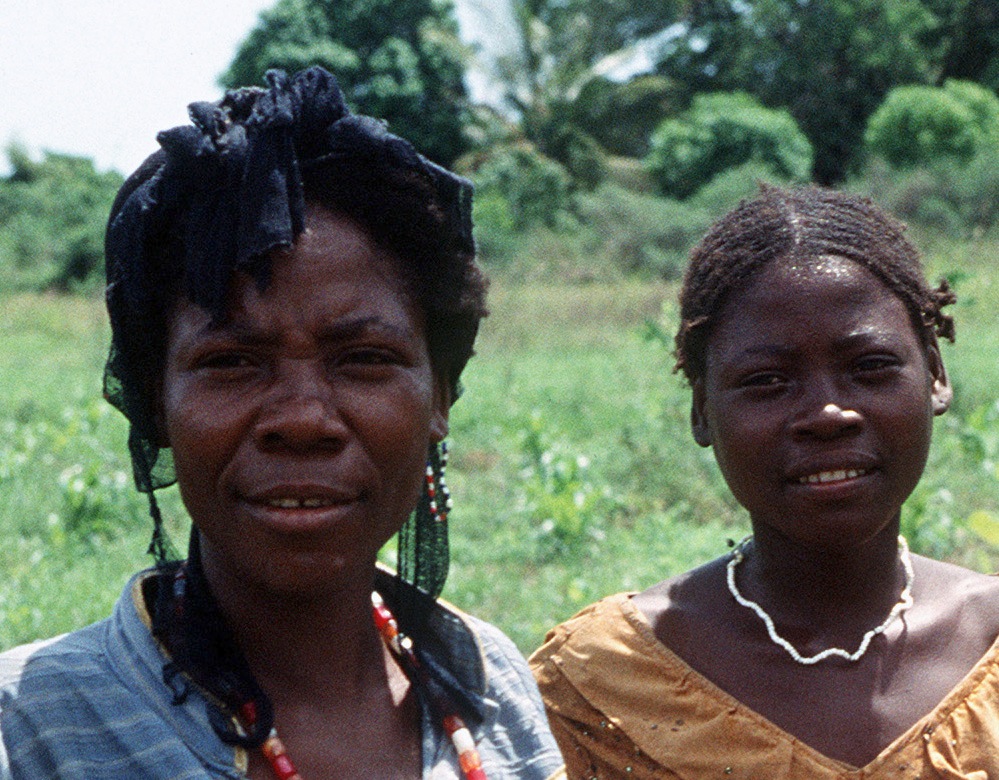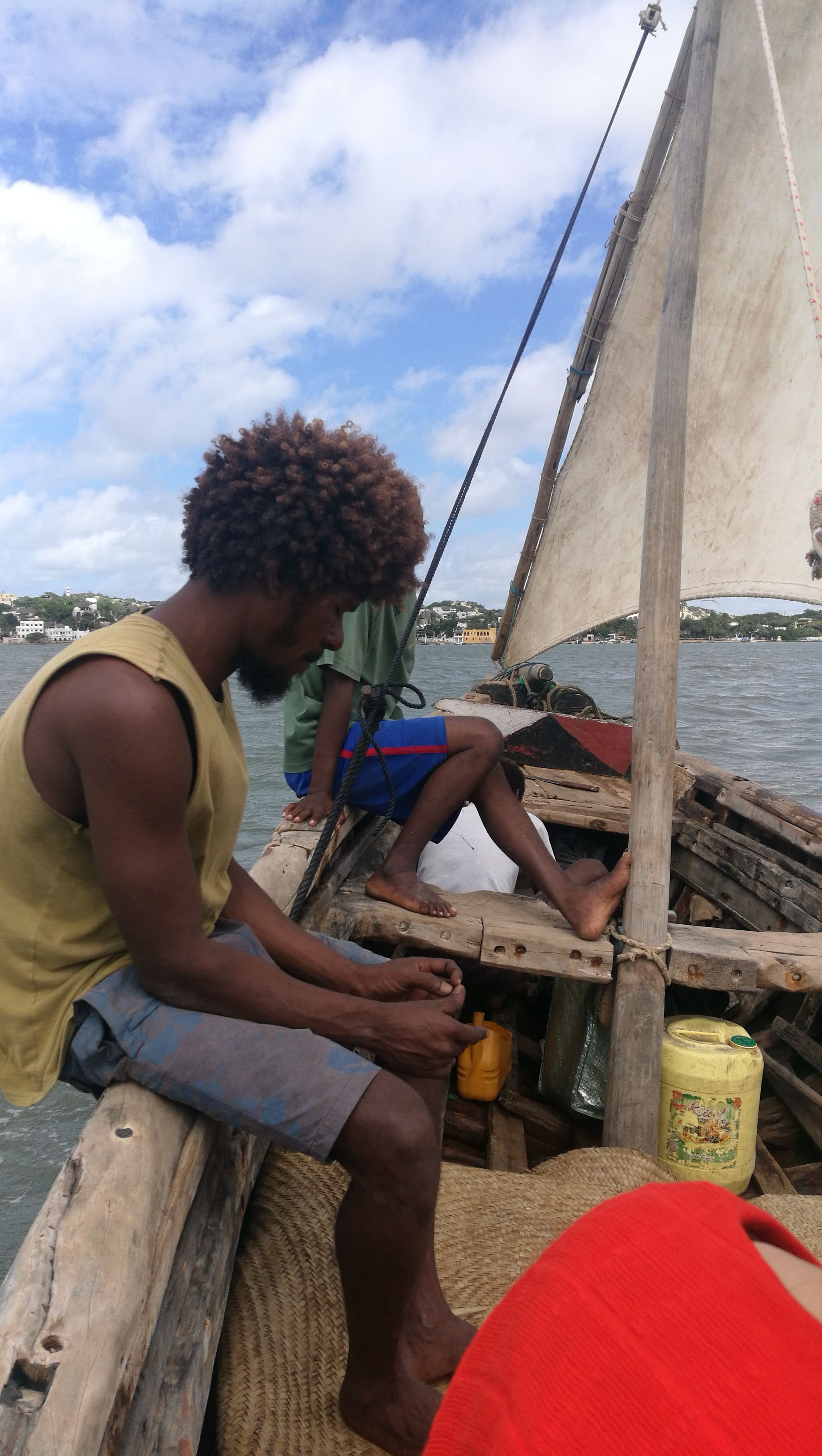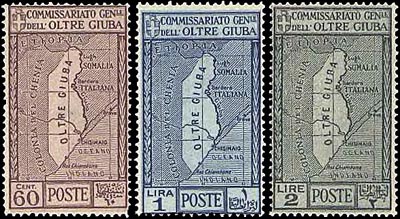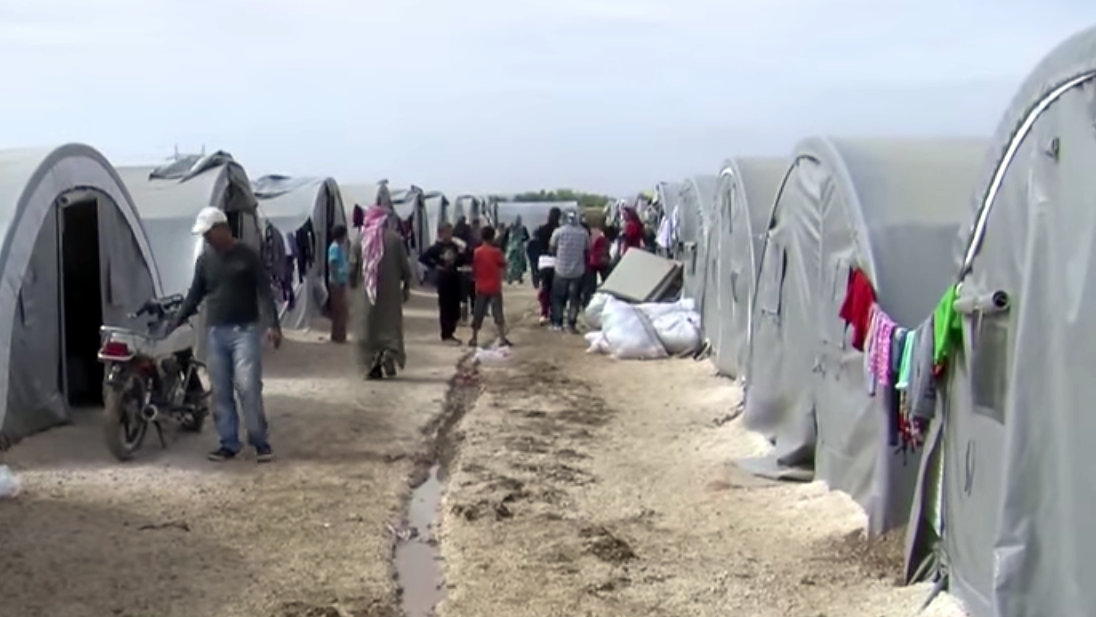|
Somali Bantu
The Somali Bantus (also known as Jareerweyne or Gosha) are a Bantu ethnic minority group in Somalia who primarily reside in the southern part of the country, primarily near the Jubba and Shabelle rivers. The Somali Bantus are descendants of enslaved peoples from various Bantu ethnic groups from Southeast Africa, particularly from Mozambique, Malawi, and Tanzania. The East African slave trade was not eliminated until the early parts of the 20th century. Somali Bantus are not ancestrally related to the indigenous ethnic Somalis of Cushitic background and have a culture distinct from the ethnic Somalis. The Somali Bantu have remained marginalized ever since the establishment of Somalia. Some Somali Bantu people have been displaced into Kenya, and a small number have returned to Tanzania. An overseas diaspora community of Somali Bantus can be found primarily in the United States. Cultural assimilation into mainstream Somali society tends to be stronger for Somali Bantus living ... [...More Info...] [...Related Items...] OR: [Wikipedia] [Google] [Baidu] |
Geography Of Somalia
Somalia is a country located in the Horn of Africa which officially consists of the intra-46th meridian east territory, the seven federal member states, namely Galmudug, Hirshabelle, Jubaland, South West State of Somalia, South West, Puntland, and the municipality of Benadir. It is bordered by Ethiopia to the west, the Gulf of Aden to the north, the Somali Sea and Guardafui Channel to the east, and Kenya to the southwest. With a land area of 637,657 square kilometers, Somalia's terrain consists mainly of plateaus, plains and highlands. Coastline of Somalia, Its coastline is more than 3,333 kilometers in length, the longest of mainland Africa. It has been described as being roughly shaped "like a tilted number seven". In the far north, the rugged east–west ranges of the Ogo Mountains lie at varying distances from the Gulf of Aden coast. Hot conditions prevail year-round, along with periodic monsoon winds and irregular rainfall. Geology suggests the presence of valuable mineral d ... [...More Info...] [...Related Items...] OR: [Wikipedia] [Google] [Baidu] |
Shebelle River
The Shebelle River ( Oromo: Laga Shabeellee, , , ) also known historically as the Nile of Mogadishu, begins in the highlands of Ethiopia, and then flows southeast into Somalia towards Mogadishu. Near Mogadishu, it turns sharply southwest, where it follows the coast. Below Mogadishu, the river becomes seasonal. During most years, the river dries up near the mouth of the Jubba River, while in seasons of heavy rainfall, the river actually reaches the Jubba and thus the ocean. During periods of heavy rainfall in Ethiopia, the Shebelle River and the Jubba River merge, and their combined waters ultimately reach the Indian Ocean. However, in drier years, the Shebelle River diminishes and transforms into a series of wetlands and sandy plains to the northeast of the confluence with the Jubba. The Shebelle River has a total length of 1,820 km. The area surrounding the Shebeli River is inhabited by Somali people in the Somali Region of Ethiopia and Somali people in Somalia. In the lower bas ... [...More Info...] [...Related Items...] OR: [Wikipedia] [Google] [Baidu] |
Ethnonym
An ethnonym () is a name applied to a given ethnic group. Ethnonyms can be divided into two categories: exonyms (whose name of the ethnic group has been created by another group of people) and autonyms, or endonyms (whose name is created and used by the ethnic group itself). For example, the dominant ethnic group of Germany is the Germans. The ethnonym ''Germans'' is a Latin-derived exonym used in the English language, but the Germans call themselves , an endonym. The German people are identified by a variety of exonyms across Europe, such as (French language, French), (Italian language, Italian), (Swedish language, Swedish) and (Polish language, Polish). As a sub-field of anthroponymy, the study of ethnonyms is called ethnonymy or ethnonymics. Ethnonyms should not be confused with demonyms, which designate all the people of a geographic territory, regardless of ethnic or linguistic divisions within its population. Variations Numerous ethnonyms can apply to the same ethni ... [...More Info...] [...Related Items...] OR: [Wikipedia] [Google] [Baidu] |
Somalia Farmers
Somalia, officially the Federal Republic of Somalia, is the easternmost country in continental Africa. The country is located in the Horn of Africa and is bordered by Ethiopia to the west, Djibouti to the northwest, Kenya to the southwest, the Gulf of Aden to the north, and the Indian Ocean to the east. Somalia has the longest coastline on Africa's mainland. Somalia has an estimated population of 18.1 million, of which 2.7 million live in the capital and largest city, Mogadishu. Around 85% of Somalia's residents are ethnic Somali people, Somalis. The official languages of the country are Somali language, Somali and Arabic, though Somali is the Languages of Somalia, primary language. Somalia has historic and religious ties to the Arab world. The people in Somalia are mainly Muslims, following the Sunni Islam, Sunni branch.. In antiquity, Somalia was an important commercial center. During the Middle Ages, several powerful Somali empires dominated the regional trade, including th ... [...More Info...] [...Related Items...] OR: [Wikipedia] [Google] [Baidu] |
Bravanese People
The Bravanese people, also known as the Barawani, are a minority ethnic group inhabiting the city of Barawe of Somalia and Kenya. Origins As their name suggests, the Bravanese hail from ''Brava'' (Barawa), a port town on the southeastern coast of Somalia. Barawa is one of the most diverse place in Somalia. The Somali people of this Banadir coast have been mixing with many different countries such as Portuguese people, Italians and Arabs. Because of its location and distance from Asia, Middle East, Europe, and nearby Islands, Barawa was strategically located for trade while people also exchanged ideas, skills, other knowledge and culture. The regional population supposedly traces their origins back to Arabs (particularly Hadhrami, Adnani and Qahtani). Many Bravanese people that have mixed with Somalis have origins from Europe, Мiddle Еast and Persia, therefore they tend to look physically distinct from the vast majority of other Somalis. Their culture, food and music resemble ... [...More Info...] [...Related Items...] OR: [Wikipedia] [Google] [Baidu] |
Bajuni People
The Bajuni people () are a Bantu ethnic group who live primarily in the city of Mombasa in Kenya. Many relocated from southern Somalia to Kenya due to war with the Oromo clan Orma, who drove them out from their ancestral territory. Overview The Bajuni people group principally inhabit the Bajuni Islands in the Somali Sea. Many also traditionally reside in Kenya, mainly in Mombasa and other towns in that country's Coast Province.Abdullahi, p.11.Mwakikagile, p.102. The population's members trace their origins to diverse groups; primarily coastal Bantu peoples along the Swahili coast and Somalis from the mainland. They additionally trace their ancestry from later arrivals such as Arabs, Persians, and Somalis who have migrated there from other regions of Somalia. Some also have Malay and Indonesian ancestry. Bajuni clan names are of two kinds, one of Bantu origin while the others are southern Somali in origin, and one clan is even called the Garre. The Katwa clan are also of So ... [...More Info...] [...Related Items...] OR: [Wikipedia] [Google] [Baidu] |
Jubaland
Jubaland (; ; ), or the Juba Valley (), is a States and regions of Somalia, Federal Member State in southern Somalia. Its eastern border lies no more than east of the Jubba River, stretching from Dolow to the Indian Ocean, while its western side flanks the North Eastern Province (Kenya), North Eastern Province in Kenya, which was carved out of Jubaland during the Italian Somaliland, colonial period. Jubaland has a total area of . As of 2005, it had a total population of 953,045 inhabitants. the largest city Kismayo, which is situated on the coast in the Indian Ocean. Bardere, Bardhere, Luuq, and Beled Haawo are the region's other principal settlements. Other cities such as Jamame and Jilib are currently occupied by Al-Shabaab (militant group), Al-Shabaab. During the Middle Ages, the influential Somali Ajuran Sultanate held sway over the territory, followed in turn by the Gobroon Dynasty, Geledi Sultanate. They were later incorporated into British East Africa. In 1925, Jubalan ... [...More Info...] [...Related Items...] OR: [Wikipedia] [Google] [Baidu] |
Cultural Assimilation
Cultural assimilation is the process in which a minority group or culture comes to resemble a society's Dominant culture, majority group or fully adopts the values, behaviors, and beliefs of another group. The melting pot model is based on this concept. A related term is cultural integration, which describes the process of becoming economically and socially integrated into another society while retaining elements of one’s original culture. This approach is also known as cultural pluralism, and it forms the basis of a cultural mosaic model that upholds the preservation of cultural rights. Another closely related concept is acculturation, which occurs through cultural diffusion and involves changes in the cultural patterns of one or both groups, while still maintaining distinct characteristics. There are various types of cultural assimilation, including full assimilation and forced assimilation. Full assimilation is common, as it occurs spontaneously. Assimilation can also invol ... [...More Info...] [...Related Items...] OR: [Wikipedia] [Google] [Baidu] |
Diaspora
A diaspora ( ) is a population that is scattered across regions which are separate from its geographic place of birth, place of origin. The word is used in reference to people who identify with a specific geographic location, but currently reside elsewhere. Notable diasporic populations include the Jewish Diaspora formed after the Babylonian exile; Assyrian diaspora following the Sayfo, Assyrian genocide; Greeks that fled or were displaced following the fall of Constantinople and the later Greek genocide as well as the Istanbul pogroms; the emigration of Anglo-Saxons (primarily to the Byzantine Empire) after the Norman Conquest, Norman Conquest of England; the Chinese people, southern Chinese and South Asian diaspora, South Asians who left their homelands during the 19th and 20th centuries; the Irish diaspora after the Great Famine (Ireland), Great Famine; the Scottish diaspora that developed on a large scale after the Highland Clearances, Highland and Lowland Clearances; Romani ... [...More Info...] [...Related Items...] OR: [Wikipedia] [Google] [Baidu] |
Somali People
The Somali people (, Wadaad: , Arabic: ) are a Cushitic ethnic group and nation native to the Somali Peninsula. who share a common ancestry, culture and history. The East Cushitic Somali language is the shared mother tongue of ethnic Somalis, which is part of the Cushitic branch of the Afroasiatic language family. They are predominantly Sunni Muslim.Mohamed Diriye Abdullahi, ''Culture and Customs of Somalia'', (Greenwood Press: 2001), p.1 Forming one of the largest ethnic groups on the continent, they cover one of the most expansive landmasses by a single ethnic group in Africa. According to most scholars, the ancient Land of Punt and its native inhabitants formed part of the ethnogenesis of the Somali people. This ancient historical kingdom is where a great portion of their cultural traditions and ancestry are said to derive from.Egypt: 3000 Years of Civilization Brought to Life By Christine El MahdyAncient perspectives on Egypt By Roger Matthews, Cornelia Roemer, Un ... [...More Info...] [...Related Items...] OR: [Wikipedia] [Google] [Baidu] |
Cushitic Speaking Peoples
Cushitic-speaking peoples are the ethnolinguistic groups who speak Cushitic languages natively. Today, the Cushitic languages are spoken as a mother tongue primarily in the Horn of Africa, with minorities speaking Cushitic languages to the north and south in Egypt, Sudan, Kenya, and Tanzania. History Donald N. Levine held that Proto-Cushitic was spoken on the Ethiopian Highlands by 5000–4000 BC. Roger Blench hypothesizes that speakers of Cushitic languages may have been the producers of "Leiterband" pottery, which influenced the pottery of the Khartoum Neolithic. Erik Becker, in a 2011 investigation of human remains from Leiterband sites in the Wadi Howar, finds the hypothetical connection of Leiterband pottery to speakers of a Cushitic language improbable. North Cushitic The nomadic Medjay and the Blemmyes—the latter a section of the ethnic descendants of the former—are believed by many historians to be ancestors of modern-day speakers of Beja; there appears to be ling ... [...More Info...] [...Related Items...] OR: [Wikipedia] [Google] [Baidu] |
Indian Ocean Slave Trade
The Indian Ocean slave trade, sometimes known as the East African slave trade, involved the capture and transportation of predominately sub-Saharan African slaves along the coasts, such as the Swahili Coast and the Horn of Africa, and through the Indian Ocean. Affected areas included East Africa, Southern Arabia, the west coast of India, Indian ocean islands (including Madagascar) and southeast Asia including Java. The source of slaves was primarily in sub-Saharan Africa, but also included North Africa and the Middle East, Indian Ocean islands, as well as South Asia. While the slave trade in the Indian Ocean started 4,000 years ago, it expanded significantly in late antiquity (1st century CE) with the rise of Byzantine and Sassanid trading enterprises. Muslim slave trading started in the 7th century, with the volume of trade fluctuating with the rise and fall of local powers. Beginning in the 16th century, slaves were traded to the Americas, including Caribbean colonies, as ... [...More Info...] [...Related Items...] OR: [Wikipedia] [Google] [Baidu] |






